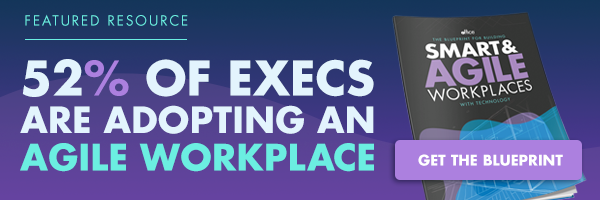ABW (Activity-Based Working): The New open Office


Here, we’ll look at activity-based working (ABW) — and the reasons organizations are making the switch. An open office concept is meant to inspire creativity and collaboration amongst colleagues. But the reality is that an open office is not appropriate for every business. Employees might struggle with the noise, lack of privacy and frequent interruptions — all of which can impact their productivity and satisfaction.
That’s why many companies are turning to ABW–a hybrid approach, one that combines a range of spaces for employees to access and rotate between.
ABW Accommodates Extroverts and Introverts
For most extroverts, an open office concept is a dream come true. The absence of cubicles and other barriers results in a more lively environment and means more opportunities to interact with coworkers. For introverts, however, it’s less than ideal. Introverts tend to prefer working in a quieter environment where they can insulate themselves from the hustle and bustle of the office.
With an activity-based working (ABW) environment, you have the best of both worlds. Extroverts have their open spaces to collaborate and brainstorm with others, while introverted employees (or extroverts who need a short reprieve) have areas where they can work in private. Striking this balance results in a happier and more productive workforce.
ABW Gives the Workforce Options
Most of the space in an open office will be dedicated to the area occupied by employee desks. However, in addition to the quiet spaces above, it’s important to offer a variety of other spaces, as well. For example:
- Small huddle rooms for private one-on-one conversations
- “Phone booths” – i.e. designated areas for employees to take personal calls
- Breakout areas for collaboration and discussion
- Comfortable spaces for relaxing and socializing
Activity-based working (ABW) gives employees the option to move around the office and settle down in workspaces specifically designed to complement their work style. This freedom not only makes employees more accepting of the workplace environment, but it can certainly have a positive influence on the employee experience in general.
It’s Easier to Gain Buy-In For Activity-Based Working
Even minor updates to the workplace can make change-averse employees apprehensive. So when you’re pitching the ideal of a complete overhaul to the office environment, it’s likely you can expect quite a bit of pushback.
What’s beneficial about activity-based working is that it empowers employees. By choosing when and where they want to work, employees gain a sense of ownership and feel more in control of their workday. Such flexibility improves the chances that they will buy into the new office management style.
With ABW, businesses can cater to the needs of their employees no matter which work style they prefer. For this workplace model to be successful, it’s important that employees are equipped with tools and resources to help them adjust to their new environment. That means giving them smart technology that allows them to easily locate colleagues and reserve workspaces — resources that are sure to garner further support.
Want to learn more about how companies like Sodexo, Genentech and Hershey updated their workplace strategy to meet the needs of a changing workforce? Check out our latest eBook, Building the Workplace of the Future.
